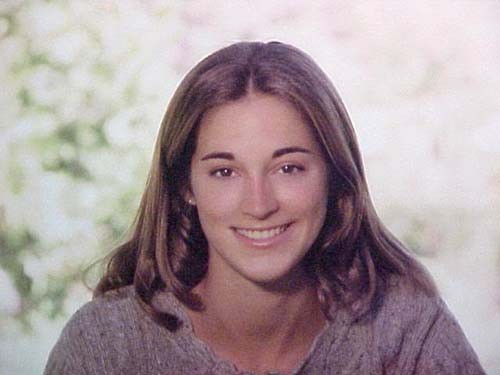
Laura Wilcox’s death was the impetus for Laura’s Law.
November 2, 2015
On July 8, 2014, the San Francisco Board of Supervisors voted in favor of implementing Laura’s Law in the City and County of San Francisco. On November 1, 2015 Laura’s Law was implemented under the direction of Angelica Almeida, Ph.D. for the San Francisco Department of Public Health. The City’s three-person Laura’s Law team will be the first stop for people whose mental health issues could land them in court for mandated care. Twelve counties have now implemented Laura’s Law.
How did Laura’s Law become California law? Laura Wilcox, a 19-year old sophomore from Haverford College, was working at Nevada County’s public mental health clinic during her winter break from college. On January 10, 2001, she and two other people were shot to death by Scott Harlan Thorpe, a 41-year old mental patient who resisted his family’s attempt to seek treatment. Thorpe was found incompetent to stand trial and was sent to Atascadero State Hospital and was later transferred to California’s Napa State Hospital.
Laura Wilcox’s death was the impetus for passage of AB 1421 in 2002, an assisted outpatient treatment program (AOT), which has since become known as Laura’s Law.
For the uninitiated, an AOT program allows court-ordered, intensive outpatient treatment for people with severe mental illnesses who refuse medication because their illness impairs their ability to make rational decisions.
People with psychotic disorders who received court-ordered treatment for 180 days had significantly better outcomes than those who were given either intensive treatment alone, or a court order alone. Thus, AB 1421 provides for a 180 day period of intensive treatment under the supervision of the court. Currently AOT can only be used if a county’s board of supervisors enacts a resolution to implement and independently fund a discrete Laura’s Law program. Now, an AOT program is available statewide as a tool that can be, but is not required to be, used to efficiently treat the most problematic patients.
A 2000 Duke University study demonstrated that people with psychotic disorders who received court-ordered treatment for 180 days had significantly better outcomes than those who were given either intensive treatment alone, or a court order alone. That’s why AB 1421 incorporates these findings by providing for 180 day periods of intensive treatment under the supervision of the court.
AB 1421 was modeled after New York’s “Kendra’s Law.” Among the targeted hard-to-treat population, Kendra’s Law resulted in 74 percent fewer homeless; 83 percent fewer arrests; 49 percent less alcohol abuse; and 48 percent less drug abuse.
Fortunately, money should no longer be an issue since voters overwhelmingly passed Proposition 63 in 2004, which established a one percent tax on personal income above $1 million to fund expanded health services for mentally ill children, adults, and seniors. Nothing in Proposition 63 prevents these funds from being used to implement Laura’s Law.
In Nevada County, where the killings took place, the law has been fully implemented and proven so successful that the county was honored in 2010 by the California State Association of Counties. In announcing the recognition, CSAC said Nevada County offset public costs of $80,000 with savings estimated at $203,000 that otherwise would have been spent on hospitalization and incarceration of program participants.
We have heard much hand-wringing about what to do with the homeless — many of whom are chronically mentally ill — who are picked up off the streets. They may or may not be placed in a treatment facility, if one is available. Once they complete treatment, they are too often dumped back on the streets with no housing, jobs, money, or followup by a professional case manager. In a short time, these homeless are back on the street. Laura’s Law could be invoked for those who refuse medication because their illness impairs their ability to make rational decisions, and utilize court-ordered outpatient treatment and provide for a 180 day case-managed followup.
The National Institute of Mental Health (NIMH) in 2010 estimated that 7.9 million Americans suffer from schizophrenia and bipolar disorder – approximately 3.3 percent of the U.S. population when combined. Of these, approximately 40 percent of the individuals with schizophrenia and 51 percent of those with bipolar are untreated in any given year, according to NIMH.
Opponents of AOT argue that that Laura’s Law violates the civil rights of persons with severe mental illness. In truth, Laura’s Law provides a very thorough protection of the civil rights of such persons. At the core of our civil rights is our ability to choose to do what we want. When a person is unable to understand the nature and consequences of their decisions because of their illness, that person is fundamentally deprived of the ability to exercise any civil rights. By assuring timely and effective intervention for the disabling medical condition of severe mental illness, Laura’s Law restores the capacity to exercise civil liberties and reduces the likelihood of the loss of liberty or life as a result of arrest, incarceration, hospitalization, victimization, suicide, and other common outcomes of non-treatment. While we as a society must safeguard the civil rights of the unfortunate, we also have an obligation to care for those who are unable to care for themselves. Laura’s Law provides such safeguards.
With the implementation of Laura’s Law, San Francisco has another tool to help the mentally ill.


 The Hunger Site
The Hunger Site
No Comments
Comments for San Francisco Implements Laura’s Law are now closed.